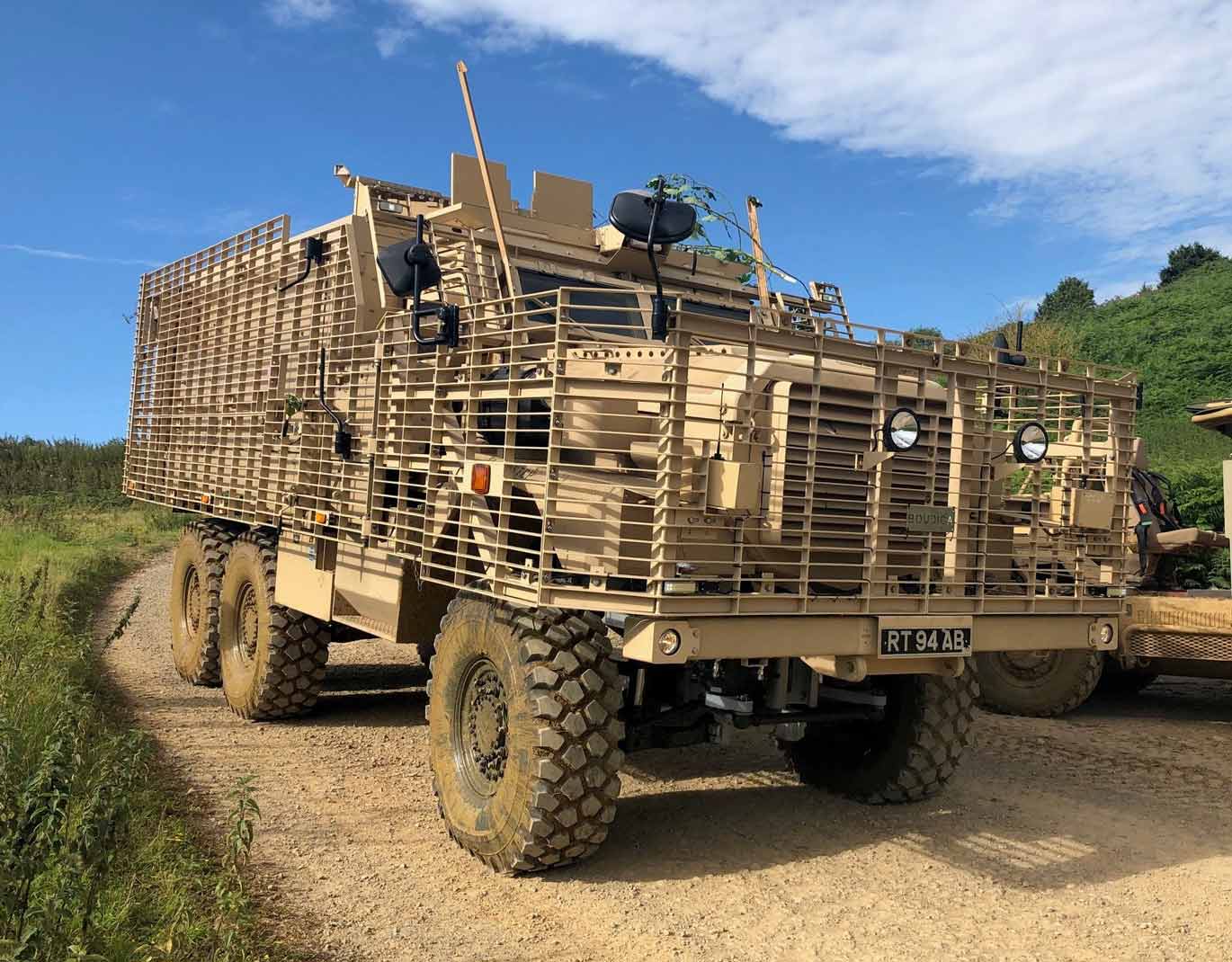New Life Breathed Into Mastiff and Ridgback Vehicles
British Army Mastiff and Ridgback vehicles have been 're-engineered' for Mali ops.
Anita Hawser
17 March 2021

The British Army's Ridgback and Mastiff platforms, which were destined to be axed from the Army's force structure, have been re-engineered for an Urgent Capability Requirement (UCR) in Mali, Africa.
Coventry-based armour manufacturer and vehicle integrator NP Aerospace carried out the work in just under a year as part of the UK Ministry of Defence's (MoD) Protected Mobility Engineering & Technical Support (PMETS) Contract.
New vehicle systems have been implemented within the Ridgback and Mastiff to increase mobility, enhance safety and introduce new capabilities. These enhancements include independent suspension systems incorporating Ride Height Control, along with upgraded driveline, steering and braking systems, central tyre inflation systems and increased diametre tyres.
The off-road mobility upgrade contract, awarded in May 2020, is valued at £7 million and covers 12 vehicles and associated spares. It has enabled proven, heavy armoured vehicles held within the protected mobility fleet to be used to protect British Army troops in challenging operational terrains. The Ridgback and Mastiff vehicles provided protection to soldiers in Afghanistan against Improvised Explosive Devices. But last year, Defence News reported that the vehicles ere among legacy vehicles to be "pensioned off" as part of an Army rationalistion programme. However, the Army seems to have found a new use for some of the vehicles in Mali.
A 300-strong task group of British soldiers was deployed to Mali in 2020 to assist the UN's multinational MINUSMA Peacekeeping Mission to combat instability in the Sahel region. British soldiers from the Light Dragoons and Royal Anglians are largely there to conduct reconnaissance and patrol tasks.
David Petheram, chief operating officer at NP Aerospace, said the off-road mobility upgrade is a significant development for the UK MoD. “It has potential to extend the life of Ridgback and Mastiff, which have saved lives on operation, whilst delivering performance improvements to match other high mobility vehicles,' he said.
Reduced vehicle vibration has lessened driver and passenger fatigue, providing a better working environment for operational tasks. Mobility improvements have enabled a proven platform to be used in theatres of operation previously unachievable for standard vehicles.
“Whilst the upgrade was driven by a specific Urgent Capability Requirement, we see this development having a much wider impact,” said Petheram. “By using experienced NP Aerospace staff alongside off-the-shelf components, NP Aerospace has cut costs significantly and enabled UK MoD to handle new combat environments without the burden of developing a completely new platform.
“The speed at which NP Aerospace and its partners have re-engineered the platforms, with fully functional prototypes delivered in just over 80 working days, has shown that we have the capabilities to meet challenging military requirements even in a global pandemic with supply chain restrictions.”
A total of over 700 Mastiff and Ridgback vehicles have been armoured and integrated by NP Aerospace over the last 15 years for use in various operational theatres.
Optimising current platforms has significantly reduced delivery timescales. As engineering authority for the protected mobility fleet, NP Aerospace is leading the project with support from companies including HORIBA-MIRA, Horstman, Texelis, Timoney, Tyron and Universal Fabrications.
A number of vehicles have already been deployed on operation with the first wave delivered in just over 80 working days. Brigadier Anna-Lee Reilly, head of the Vehicle Support Team for Defence Equipment & Support (DE&S), the procurement arm of the UK Ministry of Defence, said NP Aerospace was fundamental in its ability to deliver this capability to the Army in unprecedented timeframes.
“From requirement to delivery, we have worked hand-in-hand to develop, trial and ultimately deploy this capability on operations in less than a year,” she said. “Reviews have been extraordinarily positive, and the added capability has helped ensure that our soldiers are able to conduct their operations in a safer and more effective manner.”